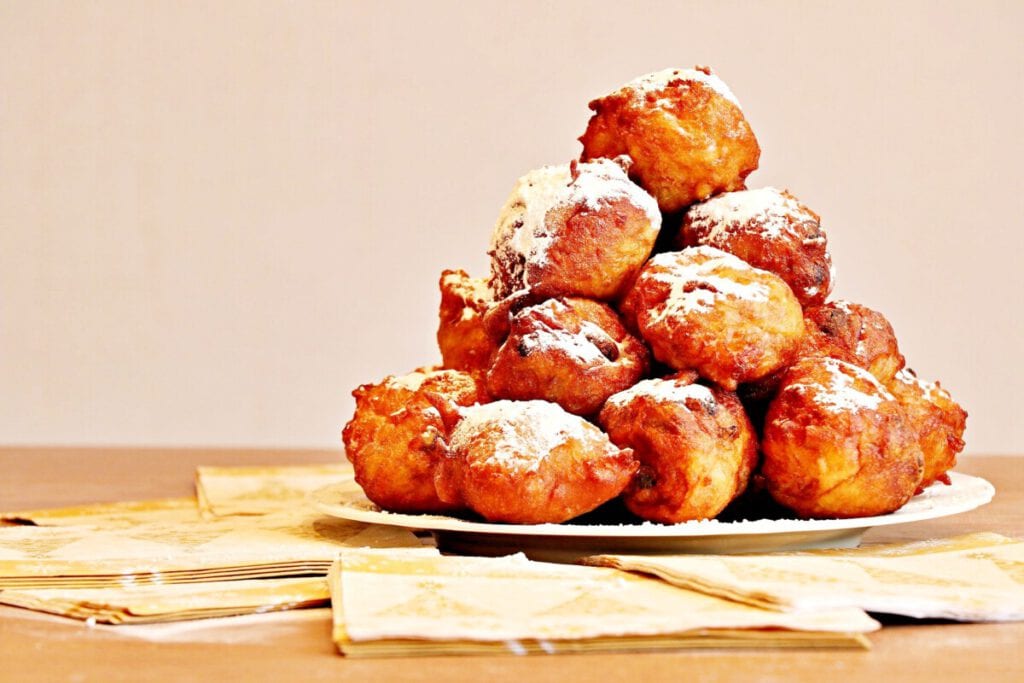Well, it’s officially oliebollen season in the Netherlands, so it’s only appropriate to address this quirk now while it’s fresh and happening en masse at almost every Dutch square near you.
Don’t get us wrong, we, at DutchReview LOVE oliebollen — we regularly carry entire conversations about them and how excited we are to have them back in the cold months. A silver lining to look forward to during Dutch winters, if you ask us. 🥶
What is it?
Oliebollen literally translates to “oil balls” or “oil cakes”, which is straight-up descriptive enough for the delicious fried Dutch delicacy — but here’s a visual aid anyway.

It’s basically a desert fritter-like dish and a New Year’s Eve food tradition that’s sold in designated mobile carts around the Netherlands during the cold months.
Oliebollen come in a variety of flavours: from raisin, currant, or apple-infused, to the basic oliebollen with just powdered sugar sprinkled on top.
READ MORE | Dutch Quirk #32: Eat a lot of very questionable snack food
Coming from New Orleans, the standard sugared oliebollen is very similar to French beignets — the dough is only shaped differently (puffy ball vs an airy square) and is not always sold hot off-street carts.
So it’s not a bad idea to pop it in the oven for some delicious heat.🍴
Why do they do it?
Simply put: they’re delicious! 🤤
But to expand on that answer a bit, aside from oliebollen’s historical timeline in the Netherlands, I believe the combination of sugar and fried dough really helps combat the cold Dutch winter.
Think of it as a sweet, sweet cure to the winter blues, if you will. 🎷
Why is it quirky?
To be crystal clear, the dish itself is not quirky, but rather the Dutch seasonal obsession with it — which we can set our clocks to. ⌚
Sure, it’s a cold months’ tradition, but I honestly would vote to keep oliebollen carts on the streets year-round to supply and support the Dutchies’ addiction.
READ MORE | 11 Dutch treats that you need to eat (like, right now)
While the designated street carts around Dutch cities are very aesthetic with their warm lights, colours, and designs — their gezellig nature only adds to the quirkiness and Dutch exclusivity of this habit.

Should you join in?
Absolutely! Run to the nearest stall or cart and stand in line now while it lasts. 🏃♀️⏳
We wouldn’t steer you wrong when it comes to Dutch food.
DutchReview crew tip: to join the hype train, be economical and buy olieballen in bulk to share with those around you — a move guaranteed to score you relationship points with Dutchies or anyone with a sweet tooth. 💯
What do you think of this Dutch quirk? Have you experienced it? Tell us in the comments below!

Oliebollen aren’t just for fall/winter; the vendors are on the streets during the Koningsdag festivities (late April) as well. I could eat myself sick with oliebollen. Major yummy!